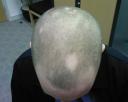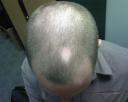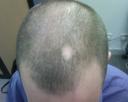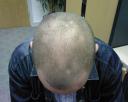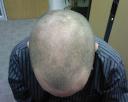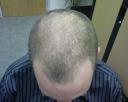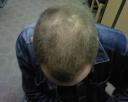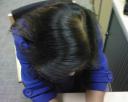24.09.2007
in Uncategorized
Some of the common hair loss, receding hairline and hair thinning, greasy hair, dandruff and itching. You would normally detect the problem after a hair wash or while combing your hair. We will advise you to have a hair and scalp check-up every year. At The Hair Centre, using advanced technology and equipments, our Trichologists can analysis your hair to help you find out the root of your problem.
Question: I have been suffering from severe dandruff for a couple of years. I have tried expensive shampoos but they offer no help to my hair problem. In fact, my problem has become so bad I’m scared of wearing black tops. Please help!
Answer: Dandruff can be caused by high sebum production, an increase rate of cell multiplication in the epidermal layer and excessive presence of a micro-organism called Pityrosporum. It can also caused by allergic reaction or extreme dry humidity. Keeping your scalp clean is the best preventive measure and daily shampoo is highly recommended. Medicated shampoo can control a minor scaling problem but frequent usage can aggravate the condition. It is advisable to rinse hair and scalp thoroughly after shampoo.
If one condition persists, there could be a more serious underlying scalp disorder. We suggest you speak to one of our trichologist who will be able to help you analyze the problem thoroughly.
Question: I have an oily scalp and I wash my hair twice a day. My forehead is receding and also my top is thinning. I am worried about my physical appearance if this problem persists. Can you advise me what I can do to improve my current condition.
Answer: You are probably suffering from androgenetic thinning (Male Pattern Baldness). This is a hereditary condition. The production of testosterone on the top of the scalp reacts to an enzyme called 5-alpha- reductase converting to di-hydrotestosterone (DHT). Presence of excessive DHT inhibits hair growth or shortens the growth cycle. It also increases the production of oil.
Stress too, can aggravate the situation. You have to continue with twice daily shampoo and somewhat live a less stressful lifestyle. You may also wish to have your hair and scalp analysis by a hair professional – telephone us and speak to one of our trichologists.
Question: I’m in my early twenties. I noticed a balding spot in the center of my head and my hair is falling out at an alarming rate as my sink clogs everyday when I wash my hair. Please tell me what I can do about this problem. It’s seriously affecting my confidence.
Answer: The bald spot mentioned could be alopecia areata condition whereby a group of white blood cells attacks the skin or hair follicles. This problem can be caused by viral infections, vaccinations, trauma to the skin or even stress.
When the hair is falling out at an alarming rate, this could be due to telogen* effluvium or loose anagen* syndrome. With this condition, the hair growth cycle is prematurely changed to dying stage. Hence, the normal hair cycle has been altered resulting in heavy hair falls. Typically for those who try to lose weight quickly by denying protein in their diet suffer from the problem. A serious trauma or stress which occurred about 3 months ago could also disrupt the hair cycle.
It is best to speak to one of our trichologist before any form of treatment can be recommended. Both problems mentioned are temporary and can be helped if treated quickly.
*telogen effluvium – anagen stage abruptly change to telogen.
*loose anagen – despite the growth cycle, the hair can easily shed through combing and shampooing.
Do you have Hair Loss Problems, read our Hair Loss Help





